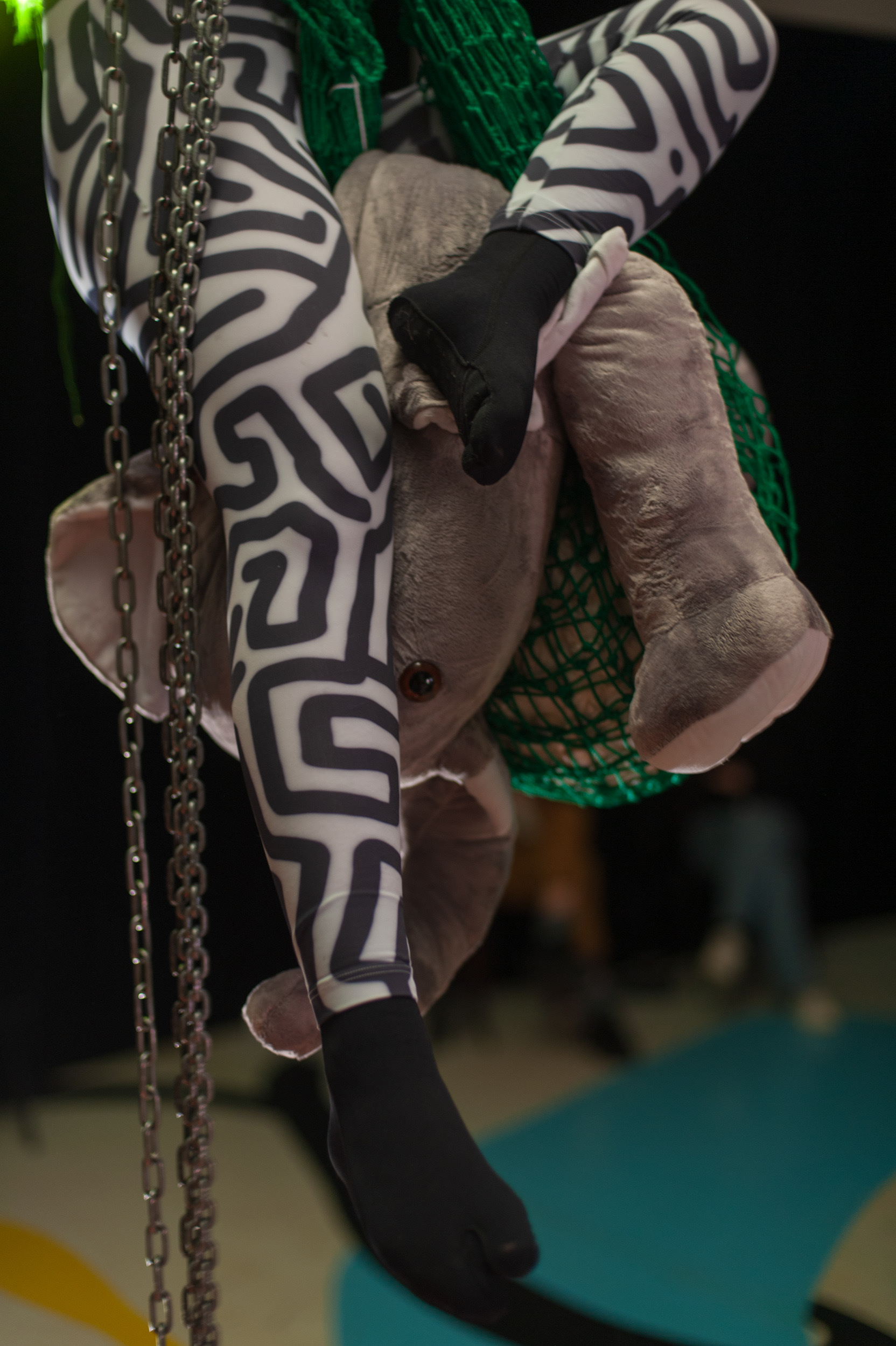Ecce Homo, oder ich erwarte die Ankunft des Teufels (2021)
stage and sound design
Nietzsche's brilliant thinking is contrasted with MacLane's virtuoso world preoccupation, which has now been translated into German for the first time 120 years after its publication. The first part is based on Nietzsche's writing, the second part on MacLane's novel.
The stage design is based on randomly chosen art works displayed on different art related instagram profiles.
The sound is based on urban fieldrecordings and fashion show soundtracks.
pictures and videos : Erich Goldmann
actors: Eva Bühnen, amuel Weiss
director Max Pross
assistant: Martin Muth
costume design: Sita Messer
dramaturg: Finnja Denkewitz
Deutsches Schauspielhaus, Hamburg


When the tortured and bleeding Jesus was brought before the people, Pilate is said to have said: Behold the man! Nietzsche,
the Antichrist, adopts the saying to tell himself about his life: it is the attempt to "spread a little light and terror" about himself. Two months after completing "Ecce Homo" (Latin for "Look, man"), his creative period ends in mental derangement. Ten years later, Nietzsche had just died, a no less selfish diary novel is being created on the other side of the Atlantic, written by 19 year-old Mary MacLane. In the wasteland of Montana she negotiates her life and thought, unscrupulous and with a “wonderful ability to misery and happiness.” Her redemption awaits her, in a certain way like Nietzsche, in the arrival of the devil.
Two unrestrained egomaniacs who are anything but egoists challenge the world of which they despair. They find refuge in the intoxication of a “revaluation of all values”. The I-cosmos maneuvers itself through the company of others. Is it conceivable that selfishness and a solidarity, empathic togetherness are compatible?